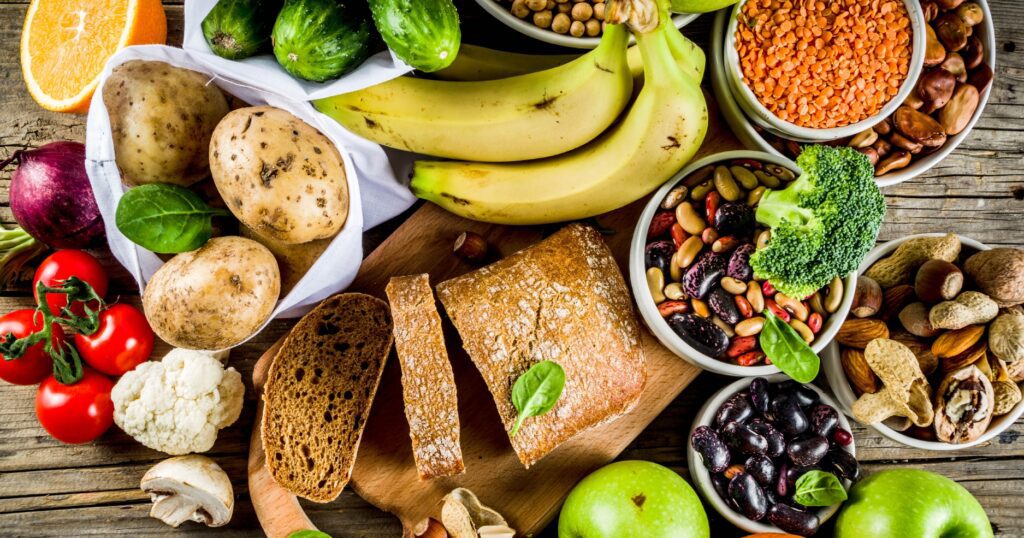Losing weight has its challenges. First, there are those days when the pounds cling, even amidst your hunger. Then there are others when you feel like your grip is weaker. That’s literal, as in you feel like your strength is slipping.
This article presents nutritional approaches that help to lose fat while maintaining muscle. Vitality throughout the coming decades means maintaining as much lean mass as possible. The steps you take today literally impact those of tomorrow.
Why lean body mass matters
Your muscles keep you moving. This lean mass can be easily lost and takes work to regain. That’s why you want to maintain yours! The human aging process begins as early as during our 30s. By the time you’re 40, you begin to lose muscle mass at 3 to 5% per decade (1). This is why it’s necessary to take steps now to retain muscle while losing fat.
How muscle loss happens while dieting
In the past, counting calories dominated dieting guidance. It amounted to losing weight when energy output, such as exercise, exceeded input or the number of calories consumed. This approach didn’t work for many. They not only regained weight but also may have lost muscle.
This is because of the roles that protein, carbohydrate, and fat macronutrients play in weight management and body composition.
Fats
Fats are essential for health and vitality. Your warmth, energy level, and a number of body functions rely on fats, including brain and nervous system activity. Enzymes begin fat breakdown in your mouth, continuing throughout your digestive tract (2). The purpose of a ketogenic diet is to limit carbohydrates while increasing fats. This generates ketones in your liver that are an alternative fuel for your body and deliver the energy needed by your brain.
Carbohydrates
Carbohydrates are sugars that can be quite complex. The body uses carbs to make glucose, the fuel essential for keeping you going. Glucose also feeds your brain, making this set of macronutrients essential (3). Unused carbs are stored in the body as fat. This is one reason that limiting carb intake is a weight management strategy. One downside is that when blood sugar (glucose) levels drop, the body may metabolize muscle for needed energy. This can happen with the ketogenic diet because protein builds muscle when in balance with carbs (4).
Proteins
Proteins and amino acids are the body’s building blocks. They build and repair tissues throughout your body. Consuming proteins increases your muscle mass, along with various forms of exercise. Protein needs are higher in children, pregnant women, older adults, and those recovering from injury or intense exercise. Protein needs vary from a minimum of .8 g per kilogram of body weight for sedentary people to 2 g per kilo for active or growing people (.013 -.032 oz/lb). Protein supplements help assure that your intake supports lean mass health and vitality.

Nutrition’s role in maintaining muscle mass and losing fat
Logic would lead one to believe that each food type is processed in a distinct way in the body. Yet mammalian physiology is so much more complex than that. As noted above, nutritional variations, including food selection, preparation, and the amount consumed, play a huge role. These and other factors determine how your body uses and stores the energy of a food’s macronutrients.
Glycemic load and you
Glycemic load refers to the amount of sugar a food generates as it’s metabolized. The glycemic load of a food is related to its glycemic index. The index measures sugar infused into your blood after consuming food.
An example is your friendly white potato. It has a high glycemic load, especially when compared with sweet potatoes. Here’s the good news! That potato’s glycemic load (and index) can be somewhat reduced by cooking and cooling it before consumption, even when reheated. This approach generates resistant starch, one key ingredient to lean mass retention while achieving fat loss.
A bit of science on resistant starch
This quick overview of resistant starch defines what it is, then briefly summarizes its science. That leads to the ‘meat of the matter’ and tips on how to select and prepare foods that save muscle mass, even as you lose weight.
Resistant starch is a carbohydrate not digested in the small intestine (5). Instead, it moves to the large intestine where it ferments. This process results in prebiotics, the ‘food’ used by your gut’s healthy bacteria.
A 2015 review of human and rat studies suggests that, along with the need for further human studies, the consumption of resistant starch:
- Reduces body fat while keeping lean body mass and without change in total energy expenditure
- Doesn’t create the negative energy balance that can lead to regaining weight
- Can positively affect body composition by contributing to lean body retention, even during “overfeeding” (5)
The fiber-resistant starch-butyrate connection
Before getting to the all-important list of resistant starch foods, there’s another crucial piece of the story to share. You’ll note that many of these foods are rich in fiber — they contribute to butyrate production by your ‘good’ gut bacteria. An extra plus is that studies reveal butyrate’s multi-faceted role in promoting and protecting health (6).
Types of resistant starch foods
It’s likely that foods with higher levels of resistant starch are already part of your diet. Plus, there are enough on the list for the most discerning palate.
- Resistant starch foods to eat right off the shelf or lightly cooked.
- Dave’s Killer Bread — Some options have only 13 grams of carb/slice.
- Vegetables — Most whole-food veggies are great sources of fiber and resistant starch. Try asparagus, onions, leafy greens, carrots, sweet potato, cauliflower, and more!
- Fruits with fibers that ferment — These include apples, green bananas, apricots, and raspberries, among others.
- Full-fat dairy — Think whole milk, cheese, and butter (7).
- Foods that have resistant starch after cooking and cooling.
- Yes, white potatoes!
- Rice, oats, and other whole grains
- Lentils, beans, and peas
There are creative ways to explore the preparation of these and other foods that add healthy resistant starch to your diet. Keep track of them compared to your weight management journey and the balance of your body composition.
Supplements
As you read about the role protein plays in building cells, including muscle, you may wonder if you’re eating enough — you may need to turn to another source of protein. One to consider is a protein supplement, especially one designed to increase your amino acid intake as these build muscle tissue and help your body thrive.
Looking for more support with healthy and effective weight management? Book a discovery session with us to discuss medical weight loss.
Conclusion
You can keep a healthy lean body mass by taking simple steps with your diet.
- Resistant starch helps retain lean mass because of how it’s processed in the intestinal tract.
- Increase resistant starch intake with food preparation strategies, such as cooking and cooling particular foods before consumption.
- Foods that help with fat loss while maintaining muscle include cooked and cooled rice, oats, potatoes, legumes, and fiber-rich foods like green bananas and apples.
- Supplements, including essential amino acid blends, help to ensure that protein levels are sufficient to protect your body’s lean mass.
References
Biggers, A. (2021). “How does the body digest fat?” Medical News Today. Accessed from: https://www.medicalnewstoday.com/articles/fat-digestion
Cleveland Clinic. (2022). The health benefits and side effects of butyrate. Health Essentials. https://health.clevelandclinic.org/butyrate-benefits/
Dunkin, M. A. (2020). Sarcopenia with aging. Compass by WebMD. https://www.webmd.com/healthy-aging/guide/sarcopenia-with-aging
Gorin, A. (2018). The 11 biggest keto diet dangers you need to know about. Everyday Health. https://www.everydayhealth.com/ketogenic-diet/diet/keto-diet-dangers-you-need-know/#:~:text=Serious%20Muscle%20Loss%20Is%20a,when%20they%20continue%20resistance%20training.
Higgins, J. A. (2015). Resistant starch and energy balance: Impact on weight loss and maintenance. Critical Review of Food Science Nutrition https://www.ncbi.nlm.nih.gov/pmc/articles/PMC4220782/
McKinney, C. (n.d.) What is resistant starch? The Johns Hopkins patient guide to diabetes. https://hopkinsdiabetesinfo.org/what-is-resistant-starch/
Richards, L. (2020). What do carbohydrates do? Medical News Today. https://www.medicalnewstoday.com/articles/function-of-carbohydrates






